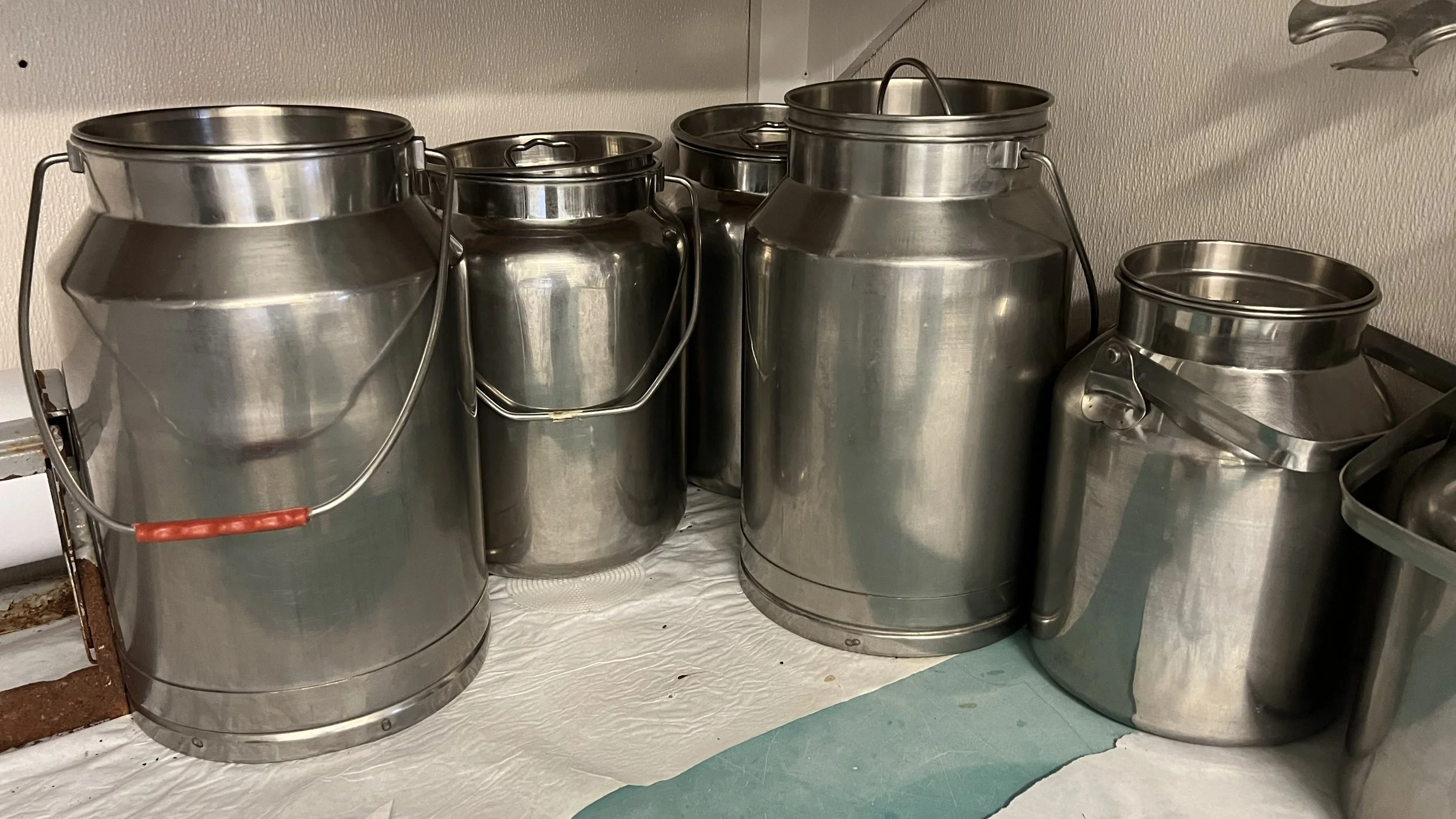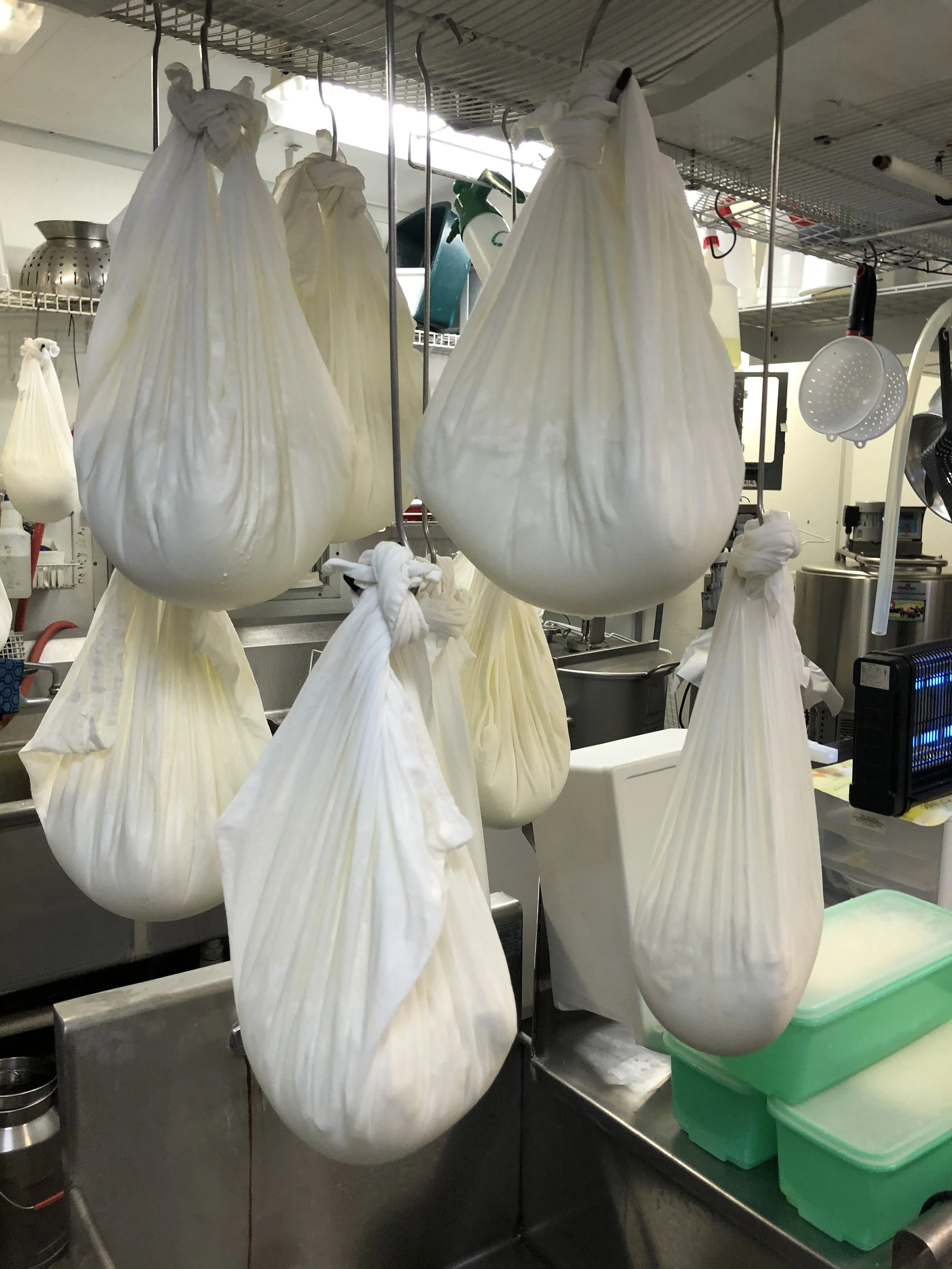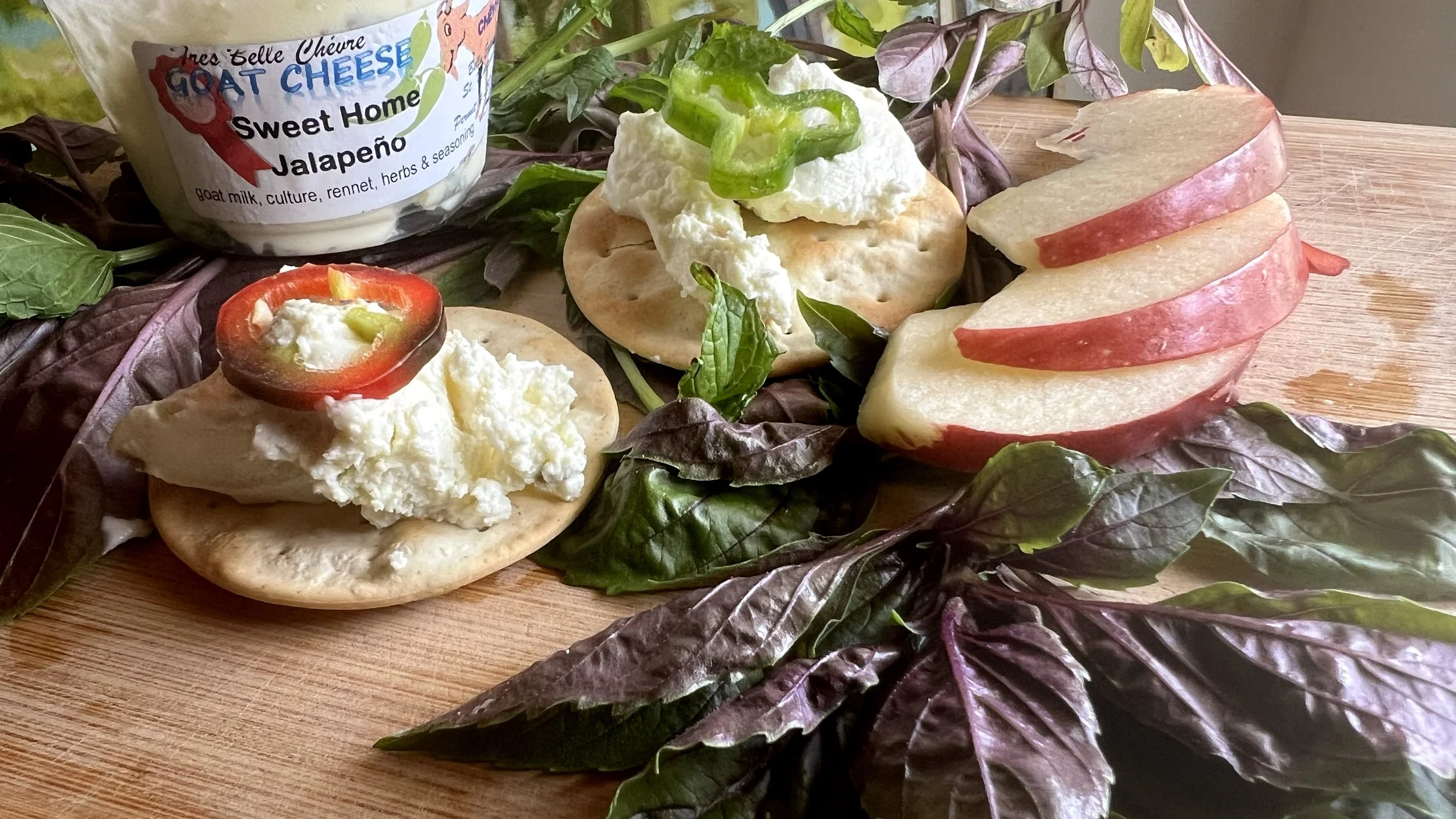Tales from a Micro-Dairy
A visit to Belle Ecorce Farms
by Jude Theriot
Used to be that every family up and down the bayou kept a few cows or goats, raised chickens for eggs, and tended small vegetable gardens to grow what they needed. Whatever they didn’t have, they bartered for with neighbors. When you drive down the oak-lined lane that leads to Belle Ecorce Farms, you feel echoes of those simpler days.
The farmstead, nestled on the bank of Bayou Teche in St. Martinville, has been in the family for over eighty years, and though it’s modest in size, it’s rich in tradition and purpose. For Wanda Barras, it’s more than just a farm—it’s a deeply rooted way of life that keeps her connected to the land and the animals she cares for. And in the twenty-plus years that she’s been at it, she has honed her cheesemaking skills into a fine art, earning numerous awards and widespread recognition. I met Barras at the farm last week, and she took me behind the scenes to meet her herd of friendly goats and to sample some of her cheeses.
“Cheese is a living thing,” she said as we stepped into the heart of the operation—the room where milk is pasteurized, where fresh cheese curds hang in cheesecloth from the ceiling, and where she hand-blends her custom spices. I’d never thought of cheese that way before, but of course it made perfect sense. Cheesemaking, at its core, is about life—milk and microorganisms working in delicate harmony. And it all happens right here, all in one place, on this vibrant little micro-dairy—how refreshing is that?—in the shade of so many live oaks, surrounded by sounds of life in every direction: the cows, the goats, the people who tend and milk them. How could the cheese be anything but extraordinary?
How long have you have you been farming here on the bayou?
This is where I grew up. My grandfather’s house is on the bayou where my daughter lives now, and my dad’s house is the next one over. My grandfather, Loul Broussard from Loreauville, was born in 1880, and he bought this property from the road to the bayou, and he retired here in the 1940’s. My daddy was the youngest child, so when he got out of the service—he was in Korea—he moved out here. So there’s always been somebody right here. He always had some little dairy cows, to have milk for the family. And I guess he sold milk, and he had chickens, and he sold eggs. It was a great place to grow up.
When did you start raising goats?
I used to have a bird business that I started in the 80’s. I sold handfeeding and breeding supplies for parrots. I raised parrots out here. I used to hatch the eggs and then feed the babies and then sell the babies as pets. So I did that in an internet mail-order company where I sold the breeding supplies. So I did that. Then I got the goats in 1999. That’s when I started with the goats. I went with my next door neighbor, Roxie, who still has a little piece of the property. And she and I went get some goats for her husband. He was retired, and she wanted to give him something to do. So I went with her, and I came back with three goats.
So you got into the goat business by accident?
I just wanted to play with the babies. I just said, oh, those are nice. Let me buy three of them. So I brought three over here, and they were bred, and they had babies, and I would milk them and feed the babies just to play with them. And then I realized I had all this milk. I said, “What do I do with this milk?” I don’t like to waste things. So I started reading, and I played with soapmaking for a little while, but it hardly uses any milk. So I started playing around in the kitchen with recipes and things. And I went to a seminar in North Carolina. They had a big three-day seminar out there with goat husbandry, cheesemaking and the business of selling your cheeses. So it was a neat little thing to get exposed to, to see if I really wanted to do that. And I decided, yeah, I can do that.
So how many goats do you have now?
At one time I had 150 goats out here, but now I have eight little does and some babies that they had this year. Because they’re seasonal. You breed goats in the fall, and then they last for five months, then they have their baby. So it’s five months they take, and they have their babies in the spring. And I don’t like them too much in January because it’s too wet and cool out here. So I prefer to push it over into March and April, the end of February, March and April. And that way my babies aren’t dying on the ground or anything. It’s a lot easier because we pasture breed. So you’re not sure exactly when they’re gonna have their babies. So we do it that way. But that is the traditional way they do it in Europe.
Traditionally in Europe, you have cheese from Easter to All Saints Day. And so it falls about right if you breed in the fall, here, and then you go into November sometimes, and then you shut them down and let them, you know, graze until it’s time for their babies. So it’s traditionally like they do in Europe. I could make it go all season, just keep rotating my does. But I’d rather do it that way. So I have seasonal availability for it. Although I do freeze my curds so I can have cheese at other times, especially the chèvre.
Marinated chèvre, Parisian blend
And chèvre means what exactly?
Chèvre, traditionally, means all goat cheese. Chèvre is made with goat milk. But most people think of chèvre as the cream cheese. You know, when you see chèvre in the store, it’s the cream cheese you see. That’s what most people think it is. But actually, chèvre is anything made with goat milk. I also have some feta that’s either cow and goat, goat, or just cow.
And you have a little store on the farm?
I have a little farm store, self service. We keep some of my cheeses in a refrigerator there. It’s mostly chèvre—plain chèvre, flavored chèvre and marinated chèvre with olive oil. When I make Camembert, I make whole wheels of cheese. I may start again next year. My cows are about to freshen. I have two of them, so I may start doing the wheels again.
I heard you’ve won awards for your cheeses?
Yeah, I’ve won national awards. In 2009, I had a guy come out here, and he was into promoting and stuff, and he wanted to promote my cheese. The American Cheese Society, and then the American Dairy Goat Association had a competition in New York that year, and I came out in all of them. I mean, that’s kind of amazing. I’d never done it before, and so competing with these big guys and stuff, I did pretty well. And that kind of put my little niche, so that was kind of nice.
Sweet Home Jalapeño chèvre, served with sliced peppers
What’s your favorite thing that you sell?
Probably my favorite products are my marinated cheeses. I love the Parisian blend. They’re marinated in olive oil, and I make all my seasoning blends in house. I also make a jalapeño chèvre and a homestyle fig chèvre, and people really seem to enjoy the sweetness of that.
Homestyle Fig chèvre, drizzled with honey
Belle Ecorce Farms is located at 6939 Main Hwy # C, St Martinville, LA 70582. As you’re heading out of St. Martinville on Main Street, heading toward New Iberia, across from Dollar General you’ll see the small road and the white slat fence leading to the farm. Go down that road and you’ll see a two-story white house on the right. The self service farm store is located beside the house. You’ll see a sign for cheese right by the store’s entrance. It’s always open. Cash and checks accepted. Call (337) 519-0231 for more information and to place special orders, such as cheese wheels and party platters. Cheeses are seasonally available from March to December.













